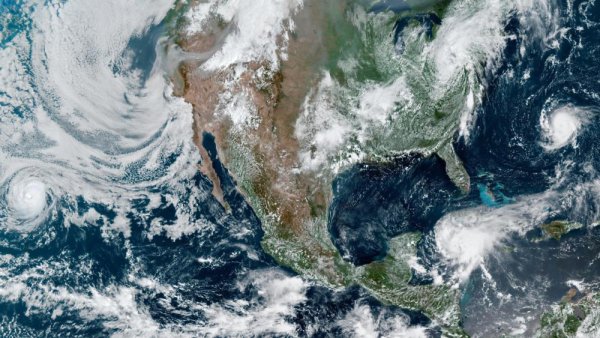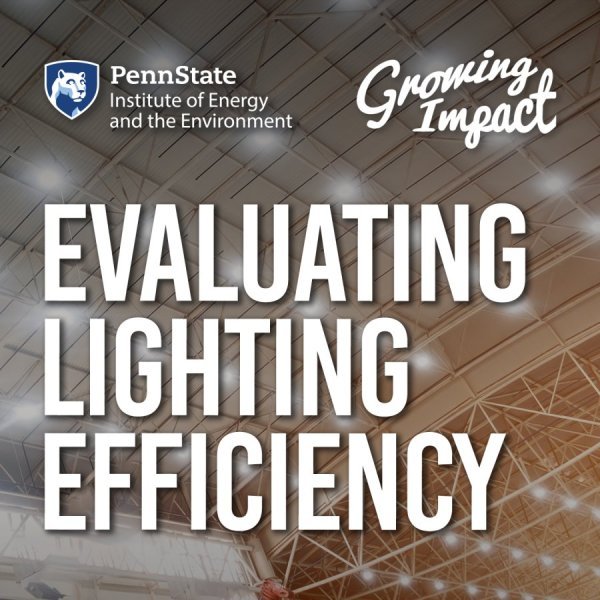Harnessing the power of photosynthesis for negative emissions
| sdg-action.org
Across the globe, the fires, floods, and droughts of 2021 are clear evidence that there is already too much carbon dioxide in the atmosphere. All IPCC models to stay within the 1.5ºC limit call for net negative CO2 emissions. Fortunately, the technologies we require can be found in nature.
How a lab works to seek and destroy the harmful chemicals known as PFAS
| stateimpact.npr.org
With about 4,700 different PFAS, these ‘forever chemicals’ are a formidable issue to tackle. The Center for PFAS Solutions can test for 40 of them.
'Back to the World' Initiative provides funding for education abroad
| psu.edu
Penn State Global’s Education Abroad office is starting a new initiative called “Back to the World.” Students are encouraged to get back out into the world by taking advantage of funding opportunities available through the program, including an opportunity focused on sustainable practices and the United Nations Sustainable Development Goals.
At World Food Prize: Penn State educator discusses next generation of ag leaders
| psu.edu
Melanie Miller Foster, co-founder of the Global Teach Ag Network in Penn State’s College of Agricultural Sciences, discussed the role of educators in preparing the next generation of agricultural leaders at the 2021 World Food Prize Norman E. Borlaug International Symposium, which addresses the most critical issues affecting global food security.
EarthTalks seminar to address fire and climate change in Rocky Mountain forests
| psu.edu
Phil Higuera, professor of fire ecology at the University of Montana, will deliver a talk titled "Fire, climate change and the resilience of Rocky Mountain forests" at 4 p.m. Monday, Nov. 15, via Zoom.
Penn State ranks among nation's best in green energy use
| onwardstate.com
About a third of Penn State's power needs come from renewable energy sources.
Engineers use deep learning to predict earthquakes in the lab
| psu.edu
A team of Penn State researchers led by Parisa Shokouhi, associate professor of engineering science and mechanics, demonstrated that deep learning algorithms, which train with data to generate predictions, could make the ability to predict future earthquakes more attainable.
Going gold: Engineers to investigate using gold as catalyst in hydrogenation
| psu.edu
Bert Chandler, Penn State professor of chemical engineering and chemistry, is at the helm of a three-year, $450,000 U.S. Department of Energy grant to investigate the use of gold as a catalyst in hydrogenation reactions.
Veterinary researcher named Huck Chair in Emerging Infectious Diseases
| psu.edu
Suresh Kuchipudi, clinical professor of veterinary and biomedical sciences in Penn State's College of Agricultural Sciences, has been named Dorothy Foehr Huck and J. Lloyd Huck Chair in Emerging Infectious Diseases in the Huck Institutes of the Life Sciences.
AI behind deepfakes may power materials design innovations, scientists say
| psu.edu
Penn State scientists are using the artificial intelligence technology behind deepfakes, computer-generated images that resemble human faces, to make advances in materials design.
Bridges, bike lanes, electric car chargers and more: 5 essential reads on the infrastructure bill
| theconversation.com
What will the US$1.2 trillion infrastructure bill pay for? Here are some of the things it will help build, fix or remove.
Penn State joins $72 million NASA consortium to study Earth system science
| psu.edu
Understanding how Earth and its atmosphere behave in their natural settings and under the impact of human influence is the focus of a new $72 million consortium funded by the NASA Goddard Space Flight Center.













